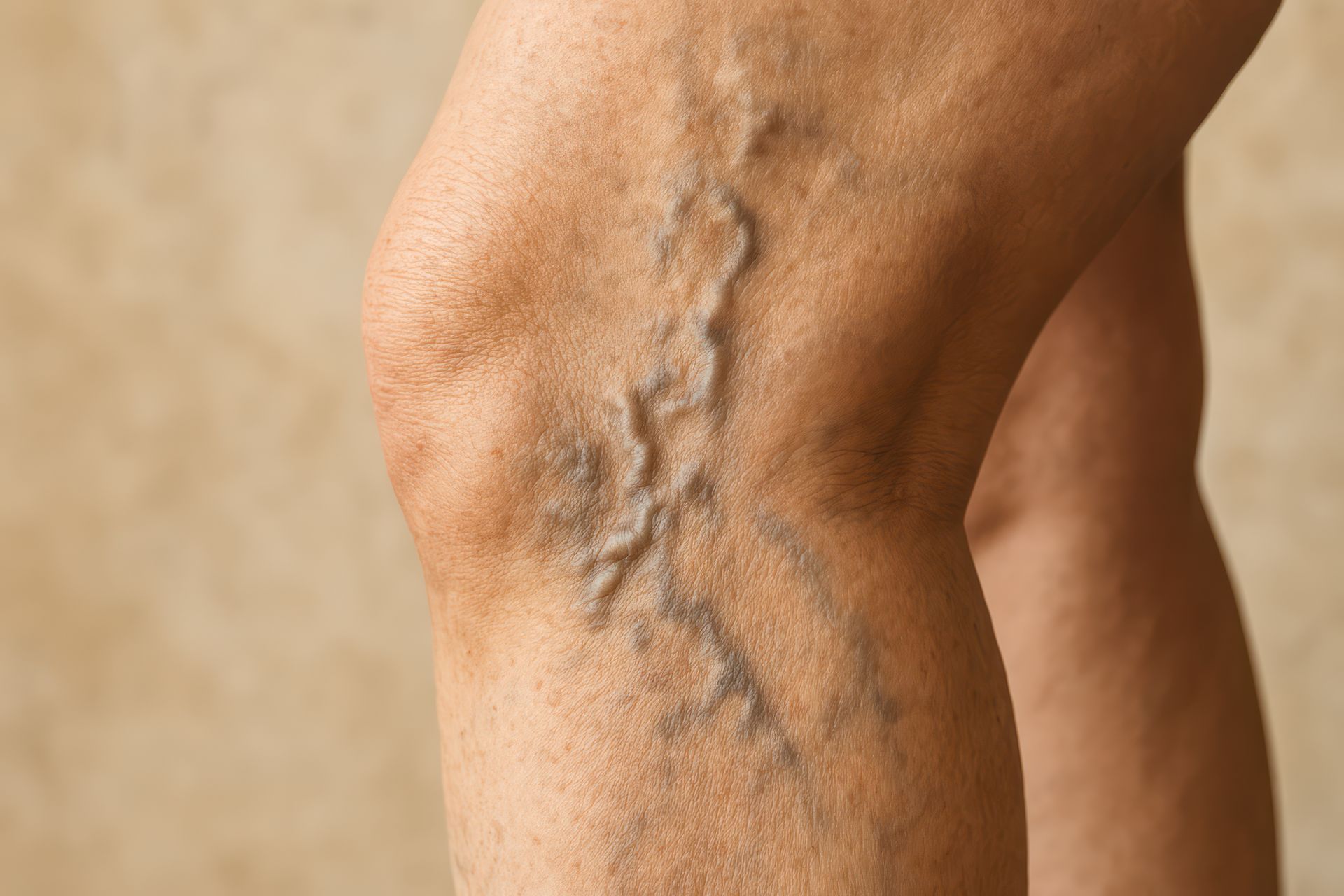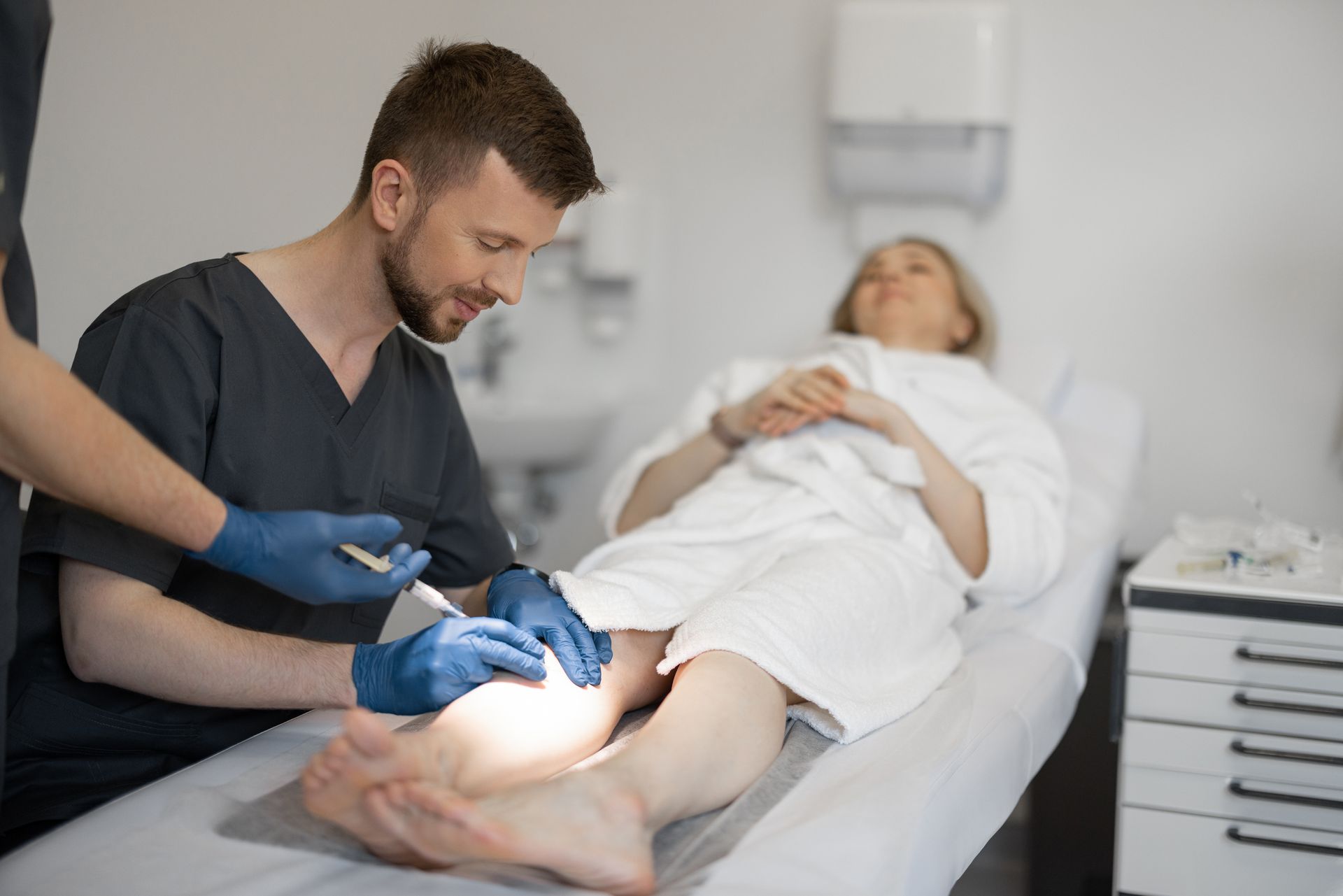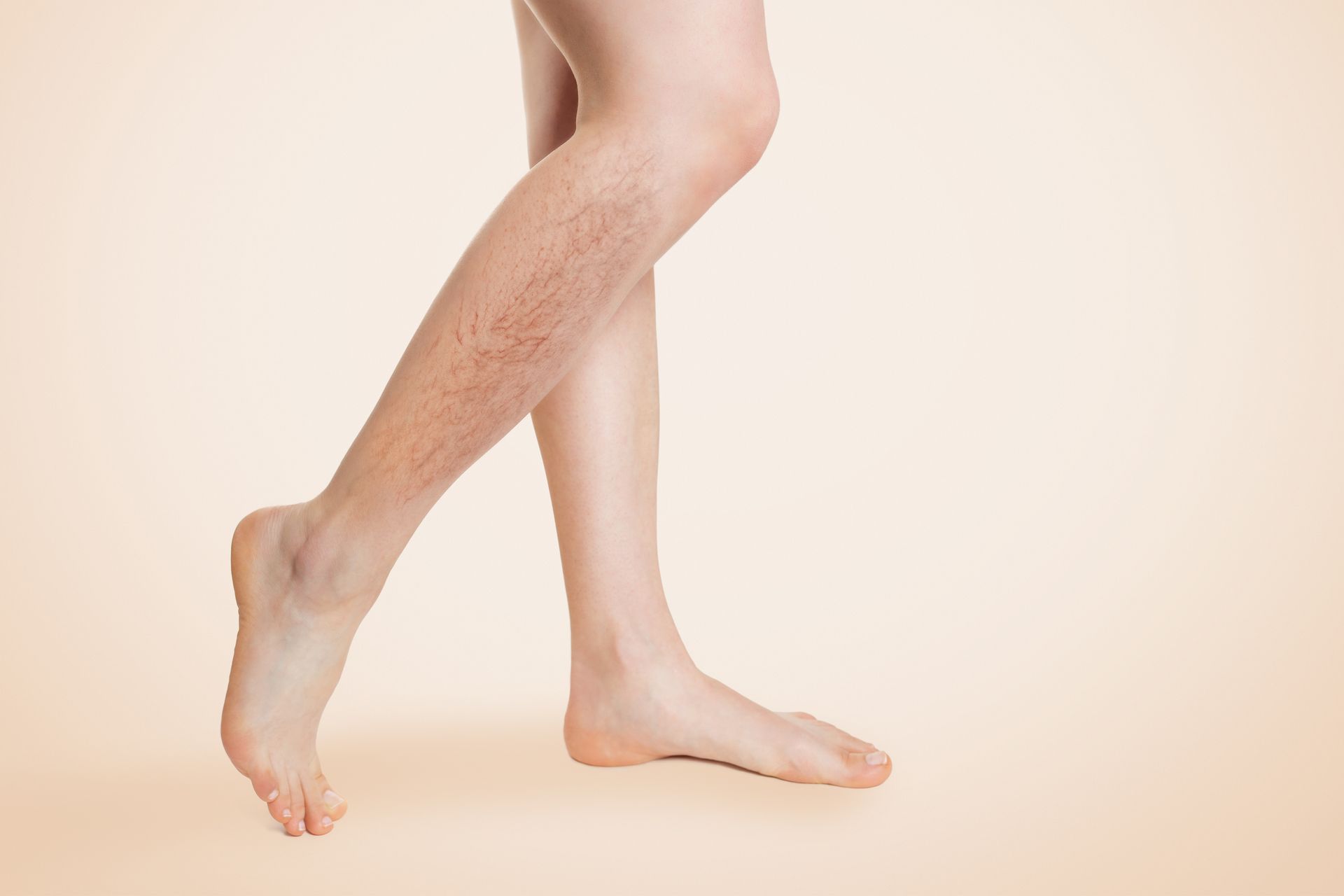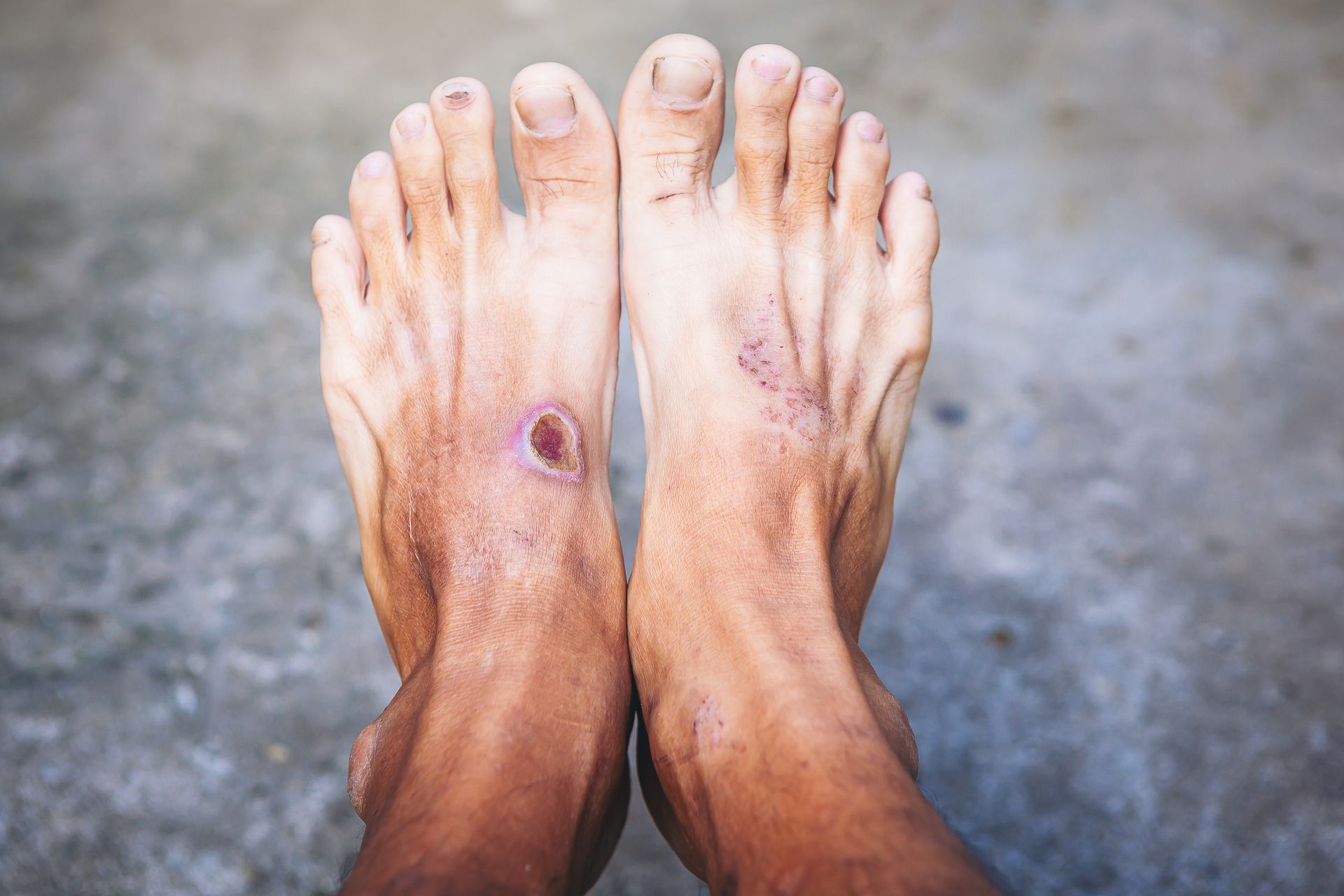How Summer Heat Affects Your Veins and What You Can Do to Stay Healthy
Key Points
- Heat causes your veins to expand, increasing discomfort and swelling
- Women over 50, those with previous pregnancies, and people in sedentary jobs are most at risk
- Simple steps like hydration, compression, and cooling off can protect your veins
- Learn practical ways to stay comfortable and support healthy blood flow this summer
Why Does Heat Affect Vein Health?
When temperatures rise, your body tries to cool off by widening (or dilating) your blood vessels. This process, called vasodilation, increases blood flow near the surface of your skin to help release heat. While this is great for cooling off, it can also make vein symptoms worse.
If you already deal with varicose veins, summer heat can cause more swelling, aching, itching, and heaviness in your legs. The expanded veins have a harder time pushing blood back up to your heart, which leads to blood pooling in your lower legs and feet.
Your whole cardiovascular system can also become strained, especially if you’re sweating a lot and losing essential minerals like sodium and potassium. This puts even more pressure on your veins and heart, increasing the risk for chronic venous insufficiency or even heat stress.
Who is at Risk For Vein Diseases
Varicose veins affect about 24 million people in the U.S., and some people are more likely to experience problems in the heat:
- Women over 50, especially during menopause
- People who have had multiple pregnancies
- Men, who account for nearly 45% of varicose vein cases
- Anyone who stands or sits for long periods (nurses, teachers, drivers, office workers)
- People with heart, kidney, or lung problems
- Those who are overweight or inactive
If you fall into one of these categories, taking precautions during the summer is especially important.
Prevention and Preparation
Good General Health
Maintaining a healthy weight, moving regularly, and eating well can improve your circulation and support strong veins. Even walking for a few minutes each hour helps keep blood from pooling.
Focus on foods that support healthy circulation, like fresh fruits, leafy greens, and foods high in magnesium (like avocados, bananas, and sweet potatoes).
Stay Hydrated
Dehydration thickens your blood, making it harder to flow smoothly through your veins. Staying hydrated helps keep your circulation strong.
How Much Water Should You Drink?
Divide your body weight in half—that’s the number of ounces of water you should aim for each day. For example, if you weigh 150 pounds, try to drink 75 ounces of water.
Wear Loose Pants
Tight clothing can restrict blood flow and make vein issues worse.
Lightweight, loose-fitting pants made from breathable fabric help your legs stay cool and your blood flowing freely.
Leg Room When Traveling
Whether you're in a car, on a plane, or at your desk—get up and move every hour. Walk the aisle, stretch your legs, or do ankle rolls and calf raises to help pump blood back toward your heart.
Wear Compression Socks or Stockings
Compression gear helps by gently squeezing your legs to support blood flow. These are especially useful if you're standing or sitting for long stretches.
Choosing the Right Compression Gear
Modern compression socks are breathable and more comfortable than ever. Talk to a vein specialist to find the right level of compression for your needs.
Put Your Feet Up
Gravity pulls blood down toward your feet, so elevating your legs can help reverse that effect. Prop your feet up on a pillow, bench, or even a beach ball when you're relaxing outdoors.
Cool Down
Avoid direct sunlight when possible. Use shade, fans, hats, and light-colored clothing to help cool off. Try to stay indoors during the hottest parts of the day (10 AM–4 PM), and always use sunscreen.
Go to the Pool More Often
Swimming is one of the best activities for vein health. The cool water helps your veins constrict, reducing swelling and blood pooling. Plus, the water supports your body weight, taking pressure off your legs.
Simple Pool Exercises
Even walking in shallow water or doing calf raises in the pool can improve circulation.
Exercise
Regular physical activity strengthens your vein valves and boosts circulation. You don’t have to overdo it—light evening walks or water-based exercise work great.
Best Time to Exercise in Summer
Avoid intense workouts during peak heat hours. Instead, exercise early in the morning or after sunset when it’s cooler.
Diet
What you eat matters. A diet high in processed foods or salt can make vein symptoms worse. Salt causes water retention, which adds pressure to your veins.
Choose fresh, whole foods, reduce sodium, and include magnesium-rich options to help your veins function properly.
FAQs About Summer Heat and Vein Health
Why do my varicose veins hurt more in summer?
Heat causes veins to expand, which increases pressure, swelling, and pain—especially in varicose or weakened veins.
Can I prevent varicose veins from getting worse in hot weather?
Yes! Stay hydrated, wear compression socks, avoid salty foods, and limit time in direct heat. Elevating your legs and light movement also help.
Is swimming good for varicose veins?
Absolutely. Swimming cools the body and supports healthy circulation while reducing pressure on your legs.
What temperature makes vein problems worse?
Symptoms tend to get worse when temperatures are above 70°F with high humidity—especially if you're outside for long periods.
FAQs About The Vein Institute
What does The Vein Institute treat?
We specialize in varicose veins, spider veins, chronic venous insufficiency, and other vascular issues. We offer both conservative and minimally invasive treatments.
Do I need a referral to visit The Vein Institute?
No referral is needed. You can call or book an appointment online directly.
Where is The Vein Institute located?
Visit our website for location details and to schedule your appointment.
Final Thoughts
Don’t let summer heat keep you indoors or in pain. By understanding how temperature affects your veins and taking a few smart precautions, you can protect your health and enjoy the season comfortably.
If your symptoms are persistent or worsening, The Vein Institute is here to help. Schedule a consultation with our specialists to explore personalized care options for healthier veins all year round.












